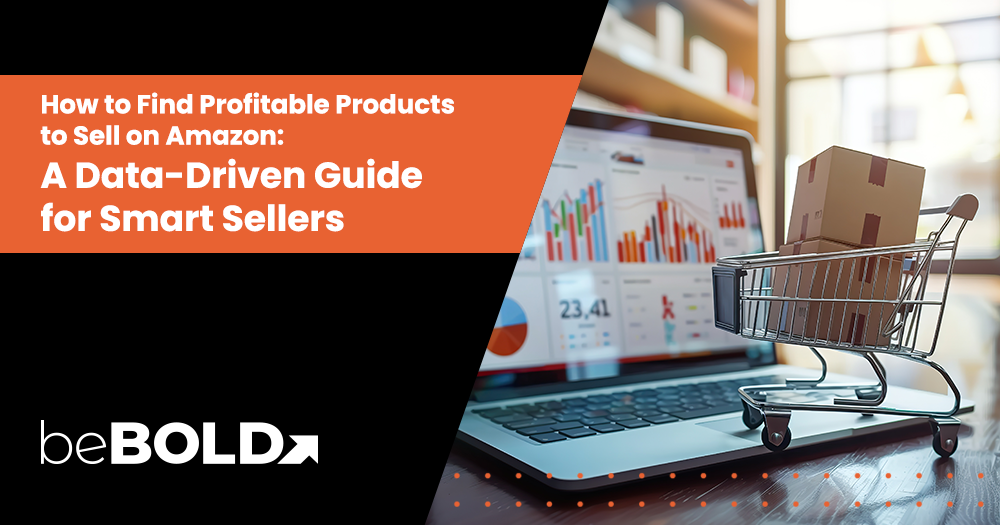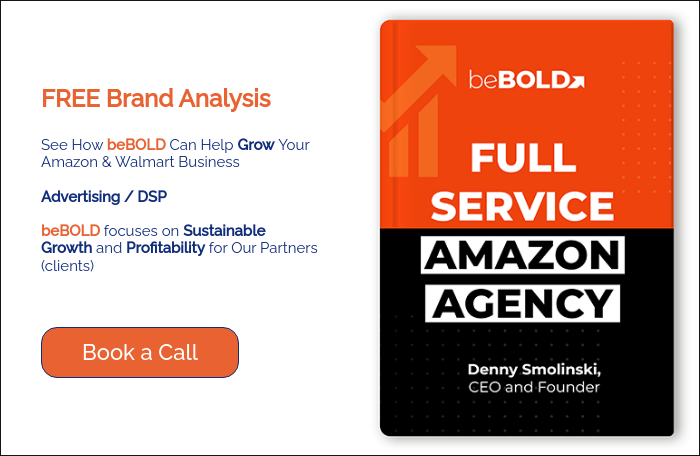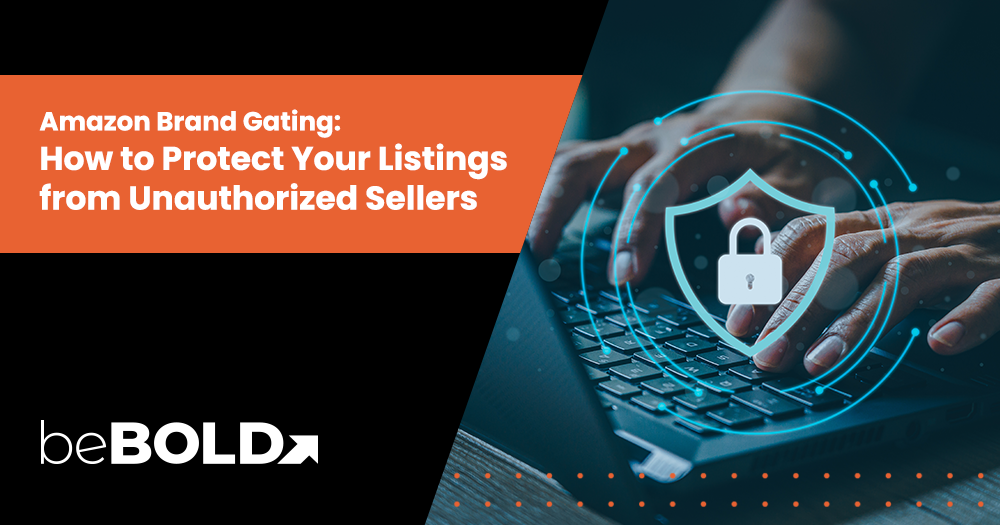Key Summary
- Follow a risk‑down workflow: Brainstorm problem‑solving ideas → validate demand with keywords + BSR → analyze reviews, price band, seller count, listing quality, and variants → run full‑fee margin math → pilot with 50–200 units. 🔍
- Check demand quality, not just volume. Favor stable BSR across multiple listings and robust long‑tails over one‑off spikes; review price/sales history to avoid erosion. 📊
- Don’t forget to include fees and costs into your calculations. Include referral + FBA + storage + returns, inbound freight, and promo/ad spend; target ≥100% ROI per restock alongside your margin goal. 🧮
- Avoid common traps early: Heavy brand/category gating, hazmat/meltables, fragile/oversize SKUs, IP‑complaint risk, and niches prone to price wars or high returns. 🚩
- Build real defensibility: Fix top review complaints, add meaningful feature/bundle/packaging upgrades, and pursue IP to slow copycats. 🛡️
- Choose categories strategically: Match your capital and logistics to the niche (e.g., beauty, home, pet), prioritizing repeat‑purchase and bundle opportunities. 🧭
Finding Profitable Products to Sell on Amazon & Understanding and Analyzing Product Demand

Before you start sourcing, define what “profitable” means for your brand. Your goal is to find products with enough demand to turn inventory quickly, but without the kind of entrenched competition that drives down price and margins. The steps below will walk you from idea to proof-of-concept, with transitions designed to minimize risk and maximize learning.
Brainstorm Product Ideas (Use Trends, Niches, Personal Knowledge)
Start by casting a wide net. Your goal here is to surface problem-solution ideas and trend signals before the data phase narrows the list. Use the bullets below to build a strong seed list you can later validate with search volume, BSR, and profitability math.
- Mine real problems your audience face. Jot recurring hassles from your work/home life, customer support tickets, subreddit threads, and competitor Q&A. Problem‑first ideas are easier to position and typically convert better because they map clear use‑cases.
- Leverage Amazon’s built-in idea wells. Scan Best Sellers, Movers & Shakers, New Releases, and deep sub‑categories. Revisit over several days to spot items that keep resurfacing versus a one‑day spike.
- Use your domain advantage. Favor categories you already understand. Subject‑matter expertise makes it easier to differentiate features, write credible copy, produce better images, and respond to reviews.
- Watch external trend radars. Check Google/Pinterest Trends, TikTok/Instagram hashtags, and niche blogs. When something pops, verify it has Amazon search demand and a sustainable price band before shortlisting.
- Apply early feasibility filters. Skip oversized/heavy, fragile, hazmat, meltable, or heavily gated items. Favor compact, non‑breakable products under ~5 lb to keep FBA fees and return risk in check.
Validate Demand (Search volume, BSR, Keyword Tools)
Have a shortlist? First, make sure people are actually searching for and buying these products. Use a keyword tool to check monthly searches for your main and related terms. Then look at the Best Sellers Rank (BSR) of the top competing listings to see if sales appear steady.
Note: If the first 5 to 10 relevant listings keep similar BSRs over time and their prices don’t swing much, the demand is likely real and not just a short‑term spike.
Analyze Competition (Reviews, Pricing, Number of Sellers)
To judge how tough a niche is, look for simple signals you can check in a few minutes. The goal is to find markets where you can realistically reach page 1 and still keep healthy margins.
- Reviews: If most Page 1 products have over 1,000 reviews, breaking in will be slow and expensive. Friendlier niches have several listings with under 200–400 reviews. These are often reachable with strong listing content and early review velocity.
- Price Band: For items that are under $20, fees and ads often wipe out margin. Between $30 and $70 is the sweet spot for many categories, leaving room for 15 to 35% net margin if your landed COGS is ≤25 to 30%. For items above $70, expect lower conversion unless your value story is obvious.
- Number of sellers & Buy Box Stability: Lots of sellers are constantly undercutting each other. Go for niches where a listing has a manageable seller count and a stable Buy Box.
- Listing quality: Look for products with weak main images, thin bullets, no A+ Content/Brand Store, and poor titles. These are openings to out‑convert competitors without lowering prices.
- Variations & Review Split: Click through product variants to see which child actually carries the BSR and social proof. One parent can hide a single “hero” child (product variation) that holds most reviews and sales.
- Brand Power, Gating & Amazon Retail: If Amazon Retail sells the top ASIN, or if the niche is dominated by gated or famous brands, anticipate that the entry will be harder. Check category/brand restrictions and IP-complaint history before you source.
Calculate Profit Margins (Amazon Fees, COGS, shipping)
Before you fall in love with an SKU, remember to run the math. Always include the following in your computation:
- Referral
- FBA
- Storage Fees
- Returns
- COGS
- Inbound Freight
- Promotions and Ads
Targets: Aim for landed COGS that is less than or equal to 25 to 30% of selling price, net margin 15–35%, and ROI ≥ 100% per restock cycle. If your spreadsheet barely clears 10% in the best case, it’s best to move on.
💡 Want to see your potential profit before you list? Try our Free Amazon FBA Calculator
to estimate your margins instantly.
Analyze Search Volume
Use a root keyword and map the cluster: primary head terms, long-tails, and adjacent use-cases.
- If the niche has one mega head term but threadbare long-tails, you’ll rely on costly ads.
- If the cluster has robust long-tails (e.g., “for small kitchens,” “travel set,” “with case”), you can rank and convert faster with tailored content.
Review Sales History
Price and sales history reveal margin risk. Scan for chronic price erosion, coupon dependency, and post-launch cliffs where sellers burn cash and exit. Stable price corridors point to healthier profit pools.
Identify Seasonal Products
Seasonal spikes can be lucrative, but they complicate cash flow and storage. If you target seasonality (e.g., Christmas decorations, Halloween trinkets), keep lead times and sell-through windows tight to avoid off-season storage penalties and stranded capital.
Study Competitor Reviews
Reviews are your free R&D lab. Take note of recurring complaints and customers’ desired features. Use them to define your differentiation brief. Fix the top 2 to 3 issues (e.g., “handle breaks,” “chemical smell,” “non-standard sizing”), then show the fix clearly in your images, A+ modules, and bullets.
Where to Buy Wholesale Products to Sell
If you’re moving from research to procurement, check out our companion article on Where to Buy Wholesale Products to Sell. It covers domestic vs. overseas trade-offs, minimum order strategies, and supplier vetting so you don’t sabotage good product research with bad sourcing.
Best Products and Categories to Sell on Amazon
There isn’t a single “best” category for everyone. The right pick depends on your budget, logistics, and differentiation plan. Below are common categories that combine steady demand with room to add value, with simple examples and watch‑outs.

Apparel & Accessories

Source: Amazon
This category attracts sellers because it offers endless niches, strong visual merchandising, and natural variations like size and color. Winning angles include problem‑solving designs (e.g., no‑show socks that stay up or anti‑chafe shorts), multi‑packs and bundles, and size‑inclusive options that broaden appeal. Show your sourcing and quality processes (e.g., “we verified OEKO-TEX certification”, “we conducted fit trials across sizes S to XXL”) and share real-life testimonials/photos of actual wearers.
For best practice, present sizing charts, showcase actual lifestyle shots instead of generic stock images, and include customer input on fit and durability. These signals help establish you as an experienced seller and increase trust with both the algorithm and shoppers.
- Why it works: Endless sub-niches and visual branding potential.
- Data Insight: The global e-commerce apparel market was valued around US$714 billion in 2024, and is estimated to reach roughly US$779 billion in 2025.
Hair Care

Source: Amazon
Hair care is a strong category because it’s consumable (repeat purchases), emotionally tied to self-care, and allows differentiated branding (e.g., clean, botanical, scalp-focused). You should articulate your formulation approach (e.g., “keratin + botanical oil blend, lab-tested for breakage reduction”), mention partnerships with stylists or clinicians, and provide ingredient sourcing transparency.
The main risks are ingredient transparency and claims compliance, plus leakage in transit. Highlight benefit‑driven outcomes in copy (e.g., frizz control for 72 hours), and enable Subscribe & Save to lift retention.
- Why it works: Replenishable and loyalty-driven.
- Data Insight: With effective technical SEO, an efficient advertising strategy and data-driven metrics and reporting, hair care brands can easily get +30% total sales year-over-year, and an improved marketing ROI of +87%.
Cosmetics

Source: Amazon
Cosmetics are highly brandable and typically small and lightweight. Micro‑niches (like cool‑toned blush or sensitive‑skin mascara), mini sets, and giftable packaging are proven approaches.
It works well thanks to high visual appeal and impulse-buy potential. To optimize your listing: highlight certifications (e.g., cruelty-free, vegan), detail shade-range or ingredient safety, rely on authentic user photos or swatches (not just idealised mockups), and include usage tips so shoppers feel confident and informed.
- Why it works: Lightweight, visual, and easy to differentiate with branding.
- Data Insight: Cosmetic SKUs under $25 with strong UGC grew 22% faster than generic listings in 2024.
Skin Care

Source: Amazon
Skincare is compelling because of high repeat purchase rates and consumer interest in ingredient science. In your listing, explain why certain ingredients matter (e.g., “hyaluronic acid + niacinamide + ceramide”), show any testing or user-feedback results, and provide transparent info (which skin types it suits, expected time for results) to build credibility and reduce buyer hesitation.
- Why it works: Repeat purchase rates + ingredient-driven education
- Data Insight: The global skincare market was valued at approximately US $115.7 billion in 2024, with growth expected towards US $122 billion in 2025.
Nutrition / Supplements

Source: Amazon
Supplements can deliver high repeat purchase rates and subscription adoption. Differentiating by dose or form (chewables, gummies, sustained‑release), showcasing third‑party testing, and using clean labels resonate with shoppers.
However, compliance and claims scrutiny are strict, sourcing matters, and counterfeit risk exists. Lead with quality signals like certifications and COAs, build review hygiene from day one, and use multi‑packs to increase AOV when appropriate.
Data Insight: While exact global numbers vary by region, wellness-adjacent markets continue to grow strongly in 2024-25.
Home & Garden

Source: Amazon
This broad category excels at everyday problem‑solving, from organization to time‑saving tools. Space‑saving organizers, easy‑install hardware, and value bundles are frequent winners.
Home & garden items appeal because they solve real problems (storage, décor, convenience) and invite upgrades. For stronger listings: share material/quality specifications (e.g., “tested for 2,000 load cycles”), include before/after or in-use photos, offer installation/usage guidance, and reference user feedback to show authenticity and reliability.
- Why it works: Everyday utility + problem-solving designs.
- Data insight: The home & garden sector is seeing strong e-commerce growth as consumers invest in lifestyle upgrades, though specific 2024 global numbers are less frequently cited.
Electronic Accessories

Source: Amazon
Accessories for electronics are efficient to launch due to smaller unit cost and frequent replacement. To optimise your listing: specify compatibility (device model, version), highlight safety certifications (UL, CE, RoHS), include hands-on test data (e.g., “measured charging speed 2.4 A for 30 mins”), show setup/unboxing visuals and ensure your refund/compatibility policy is clear.
Risks include spec churn, model changes, and commodity price wars. Avoid the spec race; instead, win on fit, durability, and thoughtful kits that raise perceived value.
- Why it works: Constant refresh cycles and upsell potential.
Medical Supplies and Equipment

Source: Amazon
Health products succeed when they address clear problems such as sleep support, posture, or pain relief. Ergonomic designs, easy‑clean materials, and value packs often convert well.
Treat your listing accordingly: include regulatory classification (e.g., FDA Class I/II, CE device), reference technical or clinical performance data, list manufacturer/supplier credentials (medical-grade facility, audited production), and show real-world use scenarios (professional endorsements or user feedback).
- Why it works: Strong, ongoing demand in ergonomic and home-wellness products.
- Data Insight: : The home-wellness and medical-aid product category is gaining traction, bolstered by at-home care trends.
Pet

Source: Amazon
This category is powered by passionate owners and frequent rebuys. Durable toys, breed‑ or size‑specific gear, safe materials, and odor‑resistant textiles are strong value props.
Pet products are a profitable category thanks to passionate buyers and repeat purchases. To make your listing strong: provide materials and durability details (“chew-tested for 100 hours”), include vet-expert endorsements or pet-owner testimonials, use real photographs of pets using the product in-home, and offer breed/size-specific guidance.
- Why it works: Passionate customers + high repeat purchase rate.
- Data Insight: The U.S. pet industry reached $152 billion in 2024 and is projected to hit $157 billion in 2025, with steady growth across food, veterinary care, and services.
Home Decor

Source: Amazon
This category is appealing because many shoppers invest in upgrading their living space. To stand out: highlight material or manufacturing credentials (for example “solid walnut vs MDF”), include real-life installation or before/after photos, give usage or care instructions (e.g., “install in under 20 minutes”), and point out consumer feedback or durability results. These details improve perceived expertise and credibility.
- Why it works: Strong emotional and seasonal buying triggers.
- Data Insight: The global home-decor market was valued at about US $230.7 billion in 2024, with expectations to grow in 2025.
Kids & Toys

Source: Amazon
Toys and kids’ products benefit from repeat/birthday/holiday purchasing and strong emotional backing.
To optimize your product listing: clearly list age/size suitability, mention safety standards or certifications, show real usage (kids playing with the item, parent review), and tie into seasonal or gift-event relevance (e.g., “ideal birthday or holiday gift”). These elements boost trust and authority.
- Data Insight: The global kids/toys market size was estimated at around US $186.7 billion in 2024, and is projected to grow significantly by 2033
Skip the Guesswork With beBOLD Digital
Finding profitable products on Amazon shouldn’t be a guessing game. Start wide with idea generation, prove demand with keywords and BSR, assess competition for a realistic path to page 1, and validate your margin with full-fee math. Then, before you scale, pilot with a small order to pressure-test conversion, returns, and ad economics.
If you want strategic support, from research frameworks to listing builds and launch playbooks, beBOLD Digital helps beauty, pet, and growth-minded brands lower the risk in product selection and accelerate time-to-profit on Amazon and Walmart. Let’s turn your shortlist into a revenue engine. Schedule a call with us today!
Frequently Asked Questions
How much does Amazon take from a $100 sale?
It depends on the category and fulfillment. Expect a referral fee (usually 8–15%), FBA pick/pack + weight-based fees, storage, and transactional costs (ads, returns). A rough planning figure is 30–40% total before COGS, but you should model each SKU with an FBA calculator.
What is the easiest item to sell?
“Easy” equals simple logistics + clear demand + low return risk. Think small, light, non-fragile accessories with straightforward use-cases and predictable replenishment.
What can I sell for $500?
Start with online/retail arbitrage or small-batch wholesale. Use scanning tools to identify profit-positive ASINs, buy limited units, and reinvest profits. Private label typically requires more capital for MOQs, branding, and reviews.
What items cannot be sold on Amazon?
Restricted products include hazmat, certain medical/health categories, unsafe or recalled items, and IP-infringing goods. Always check category gating and brand restrictions in Seller Central before sourcing.
How much money do I need to start selling profitable products on Amazon?
You can test with $500–$2,000 via arbitrage/wholesale, but private label typically needs $3,000–$10,000+ for inventory, branding, samples, certification, and launch marketing. Start lean, validate, then scale.
What is the difference between high-demand and profitable products on Amazon?
High demand means lots of searches and purchases; profitable means those purchases leave you money after fees and ad spend. A market can be high demand but unprofitable if competition forces price down or fees/COGS are too high.
How do I avoid selling products with low margins on Amazon?
Run unit economics before you order: include FBA/FBM fees, COGS, inbound freight, storage, returns, and promo spend. Aim for ≥15–35% net margin and ≥100% ROI per restock. If your model only works at unrealistic ad ACoS or coupon rates, skip it.
Are seasonal products profitable to sell on Amazon?
They can be, but they’re timing-sensitive. Profit hinges on lead time, sell-through window, and inventory discipline. If cash flow is tight or forecasting is uncertain, start with evergreen products and layer seasonals later.










Comments